|
Pictured below President Barack Obama and Vice President Joe Biden meet
with BP executives in the Roosevelt Room of the White House, June 16,
2010, to discuss the BP oil spill in the Gulf of Mexico. Pictured, from
left, are BP CEO Tony Hayward, BP Chairman Carl-Henric Svanberg, BP
General Counsel Rupert Bondy, BP Managing Director Robert Dudley, Senior
Advisor Valerie Jarrett, Labor Secretary Hilda Solis, Attorney General
Eric Holder, and Homeland Security Secretary Janet Napolitano. (Official
White House Photo by Pete Souza)
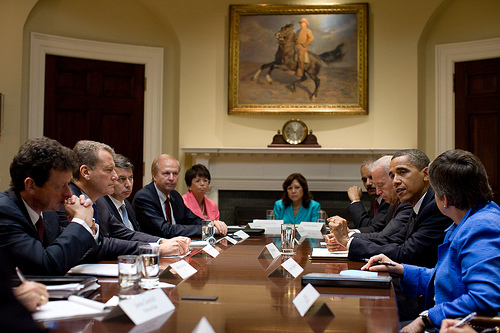
To file a discrimination complaint or ask about spill safety
issues only go to
http://www.osha.gov/workers.html
Example of workers water blasting during the Gulf Deepwater Horizon Incident
these workers are often HAZWOPER qualified for other than
clean boom
deployment in clean areas. This is because of the
uncertain potential exposure when encountering free products
with the carcinogen benzene in initial releases and other hydrocarbons as the
temperature warms and the likelihood of people getting
photochemical dermatitis or skin exposure. This can be
compounded by heat stress.
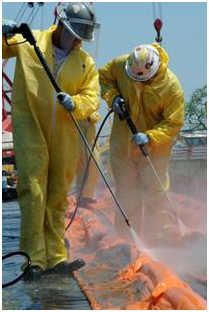
VENICE, La. - Workers at a decontamination site here, clean
dirty oil-containment boom, May 4, 2010. Once clean, the boom is to be
transferred to a staging area where it will be put back into
service using one of the many boats fighting to mitigate the
effects of the uncontrolled discharge of oil that was a
result of the Deepwater Horizon incident. U.S. Coast Guard
photo by Petty Officer 3rd Class Patrick Kelley.
We recommend only personnel with 40 HAZWOPER engage in
recovery operations of booms and oil.
CURRENT NEWS ON THIS INCIDENT PLEASE RETURN
GULF
SPILL NEWS
CONTACT
OUR REPRESENTATIVE FOR DETAILS (800) 275-8239
Disaster Recovery
Planning and Continuity Plans Click Here!
Disaster safety
equipment products see
http://www.supersafety.com
Tell us what training you need or what you want to order.
Telephone us call (800) 275-8239 or
FAX 773-538-8080
Contact Us.
INTERNATIONAL CALL COUNTRY CODE +1 (312)
543-6742 or
INTERNATIONAL FAX 001 or +1 773-538-8080
Call us
at (800) 275-8239 to discuss what options we can provide to
help you best utilize your security, emergency preparedness
or disaster preparedness financial resources.
If your a Site Supervisor or Site Safety Officer you may
want to look at this link. Make sure Supervisors have
the OSHA 8 HAZWOPER training for Site Supervisors and
managers.
 Come back please
Come back please
It takes
environmental specialist and
construction workers with DSW or equivalent training. It's work in this day and age that those type of
companies do that help America recover. Those companies need to have many business items in
place before putting workers in the field to be certified a DSW such as
training, funding and basic survival such as food and lodging. During times when those services are
not needed budgets are stretched thin there are pre-disaster reductions in force and
equipment has to be maintained or purchased. It takes time to mobilize all of
this and the Private Sector simply can't afford to keep on staff
equipment and personnel so when a disaster happens it often will take
time to ensure funds are there to do the work. We realize that the
disaster site workers need good training and a sharp awareness of
teamwork, construction techniques, Weapons of Mass Destruction (WMD)
awareness and their role reporting to their line Supervisor to stay safe.
Our mission is to
provide professional HAZWOPER 40 hour courses getting employee's ready to do the
work to assist those in need for humanitarian relief, assisting other
federal agencies, and protecting the
environment.
The Hazardous Waste and Emergency Response Course is OSHA mandated for
working while employed with Dangerous Chemicals, Fire, Explosions that
could because of possibility of serious injury or death. Hurricane
Katrina for example is a National Disaster not regulated by OSHA until
it
is downgraded then OSHA has authority and enforced 29 CFR 1910.120 (e)
In
addition, the
http://www.niehs.nih.gov/ is reaching out to this sector
in construction and OSHA and others to get more people
involved with the Disaster Site Work Program. For more
information on sharing your funding with us at Chicago
Safety Institute or NIEHS.
In addition, there is an established an effective national
framework to develop and provide comprehensive training that is needed
to address Superfund cleanups, chemical emergency responses, RCRA
corrective actions, and environmental restoration in urban communities
surrounding Brownfield's sites.
Funding and charities must be available to bring in help
from the public sector or private sector when the
infrastructure is destroyed (the
basic facilities, services, and installations needed for the functioning
of a community or society, such as transportation and communications
systems, water and power lines, and public institutions including
schools, post offices, and prisons).
Crews work to clean boom.
|
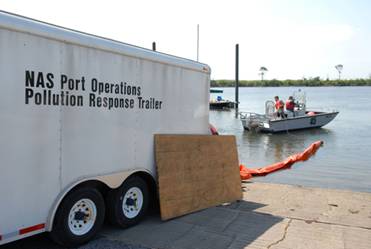
|
|
NAVAL AIR STATION PENSACOLA, Fla. -
Naval Air Station Pensacola's Pollution Response unit
deploys an oil containment boom at Sherman Cove to protect
environmentally sensitive grass beds from the Deepwater
Horizon oil spill,
May 4, 2010. U.S. Navy photo by Patrick Nichols.
|
|
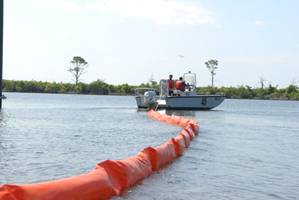
|
NAVAL AIR STATION PENSACOLA, Fla. -
Naval Air Station Pensacola Pollution Response unit deploys
an oil containment boom at Sherman Cove to protect
environmentally sensitive grass beds from the Deepwater
Horizon oil spill, May 4, 2010.
U.S. Navy photo by Patrick Nichols.
|

|
|
NAVAL AIR STATION PENSACOLA, Fla. -
The crew of the U.S. Coast Guard Cutter Oak
prepares its oil spill recovery equipment while
moored here, May 3, 2010. The 50-member crew
left NASP May 4, heading to where the oil was
the heaviest in the Gulf. U.S. Navy photo by
Anne Thrower.
|
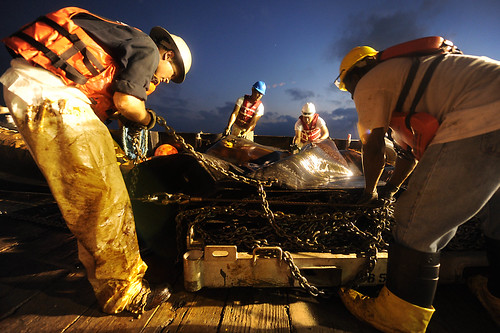
GULF OF MEXICO - Crewmembers from Marine Vessel
Braxton Perry recover a deflection boom after
three days of controlled burns in the Gulf of
Mexico, May 7, 2010. The U.S. Coast Guard,
working in partnership with BP PLC, local
residents, and other federal agencies, is
conducting; in situ burning; to aid in
preventing the spread of oil following the April
20 explosion on the Mobile Offshore Drilling
Unit Deepwater Horizon. U.S. Navy photo by Mass
Communication Specialist 2nd Class Justin
Stumberg.
|
D
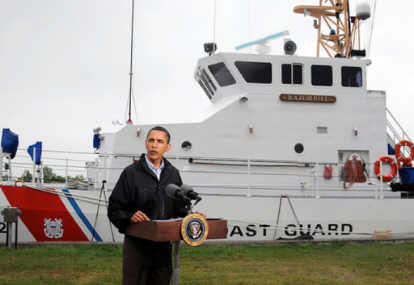 With US Coast Guard Cutter
With US Coast Guard Cutter
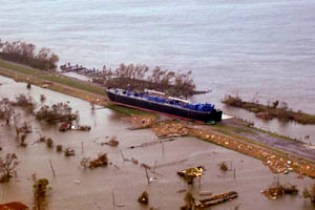 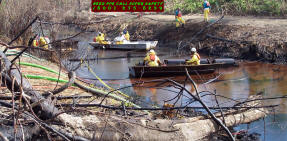 Katrina
Disaster Katrina
Disaster
Please see our
schedule for details of getting the
Disaster Site Worker training.
What to do
if you are affected.
We also provide Site Safety
services as your Industrial Hygienist and Safety Management Consultant. We assist
in Disaster Recovery Services. Our Audits prevent disaster from
impacting business too. We can show that using our services is cheaper than
using alternatives. Call us before the Disaster if you have a
disaster get help from us or one of our clients companies. Our
Network of Client Companies are all specialists in many areas and
disciplines that are necessary for Disaster Recovery.
|
Other information
Marine Spill
Spill Prevention Planning
Incident Command
Oil Effects Marine and Wetlands
Oil Shoreline Assessment and Clean Up
Dispersants
In Situ Burning
Mechanical Containment and Recovery
The Regulations and
USCG in part only this many has several other parts.
Private Sector
DHS and NRP primary and support agencies coordinate with the
private sector to effectively share information, form courses of
action, and incorporate available resources to prevent, prepare
for, respond to, and recover from Incidents of National
Significance. Further, the Secretary of Homeland Security
utilizes a private-sector advisory group with broad
representation to provide advice on incident management and
emergency response issues impacting their stakeholders.
Roles:
The roles,
responsibilities, and participation of the private sector during
Incidents of National.
Significance vary based on the nature of the organization and
the type and impact of the incident. The roles of private-sector
organizations are summarized below. |
|
Impacted Organization or
Infrastructure
|
Private-sector organizations may
be affected by direct or indirect consequences of the incident,
including privately owned critical infrastructure, key
resources, and those main private-sector organizations that are
significant to local, regional, and national economic recovery
from the incident. Examples of privately owned infrastructure
include transportation, telecommunications, private utilities,
financial institutions, and hospitals. |
|
Response Resource |
Private-sector organizations
provide response resources (donated or compensated) during an
incident—including specialized teams, equipment, and advanced
technologies —through local public-private emergency plans,
mutual aid agreements, or incident specific requests from
government and private-sector-volunteered initiatives. |
|
Regulated and/or Responsible
Party
|
Owners/operators of certain
regulated facilities or hazardous operations may bear
responsibilities under the law for preparing for and preventing
incidents from occurring, and responding to an incident once it
occurs. For example, Federal regulations require
owners/operators of Nuclear Regulatory Commission
(NRC)-regulated nuclear facilities and activities to maintain
emergency (incident) preparedness plans, procedures, and
facilities and to perform assessments, prompt notifications, and
training for a response to an incident. |
|
State/Local Emergency
Organization Member |
Private-sector organizations may
serve as an active partner in local and State emergency
preparedness and response organizations and activities. |
|
TOP |
|
Note to walk In!
[Disclaimer: We do NOT guarantee jobs! Photos are public domain some are taken by the USCG we are not the
USCG.]
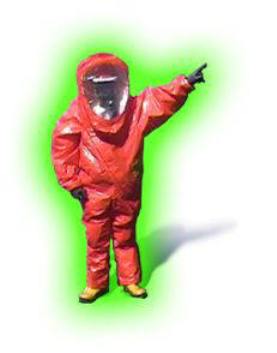 FOR
HAZWOPER OR EMERGENCY
RESPONSE TRAINING
(ERT) OR
40 HOUR
HAZWOPER GO TO FOR
HAZWOPER OR EMERGENCY
RESPONSE TRAINING
(ERT) OR
40 HOUR
HAZWOPER GO TO

Some
custom training that requires special materials or equipment you require for
training may be cost plus.
(800) 275-8239

Copyright ©
2023 All rights reserved Hendy Company, Super Safety or Chicago Safety Institute under domestic and international laws
All Rights Reserved.
 TOP TOP |

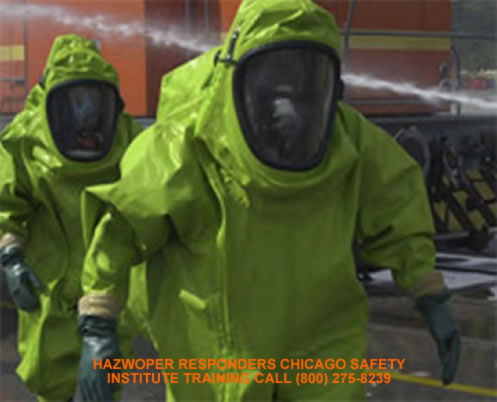 Buy these suites
Buy these suites 





 With US Coast Guard Cutter
With US Coast Guard Cutter

